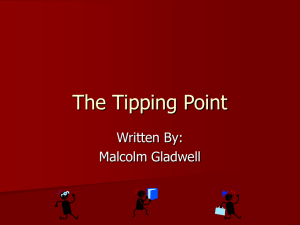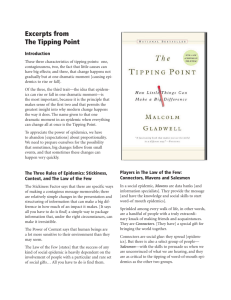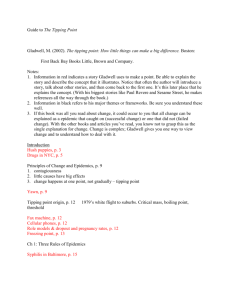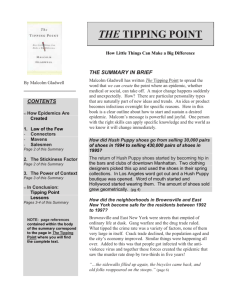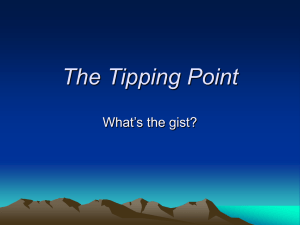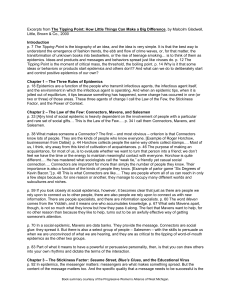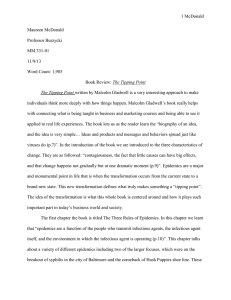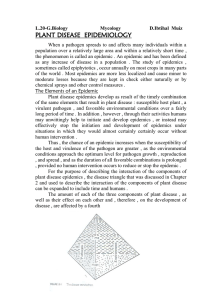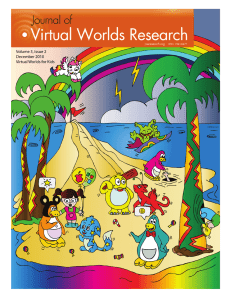The Tipping Point – Part 1
advertisement
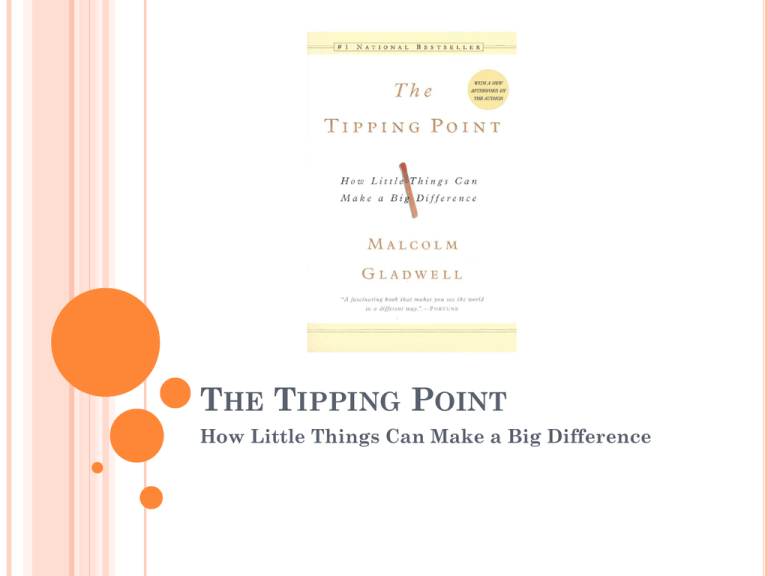
THE TIPPING POINT How Little Things Can Make a Big Difference WHAT IS THE TIPPING POINT? It is that magic moment when an idea, trend, or social behavior crosses a threshold, tips, and spreads like wildfire. Why is it that some ideas or behaviors or products start epidemics and others don’t? What can we do to deliberately start and control positive epidemics of our own? EPIDEMICS IN ACTION Rise of Hush Puppies shoes & fall of crime rate 3 characteristics: Little changes had big effects Contagious behavior Both changes happened in a hurry THE THREE RULES OF EPIDEMICS The Law of the Few The Stickiness Factor The Power of Context THE LAW OF THE FEW The success of any kind of social epidemic is heavily dependent on the involvement of people with a particular and rare set of social gifts The 80/20 principle Paul Revere’s midnight ride Stanley Milgram’s small world problem How are human beings connected? WHO ARE “THE FEW” Connectors: the kind of people who know everyone and possess special gifts for bringing the world together Mavens: means one who accumulates knowledge and who has information on a lot of different products or prices or places Salesmen: the select group of people with the skills to persuade us when we are unconvinced of what we are hearing LET’S TALK ABOUT IT Which are you? Connector Maven Salesmen Who are you most likely to be influenced by? Are there an equal number of each in the world? IN A SOCIAL EPIDEMIC Mavens are data banks, they provide the message Connectors are the social glue, they spread the message Salesmen have the skills to persuade us when we are unconvinced of what we are hearing, and they are the equally as critical to the tipping of the word-of-mouth epidemics as the other two groups THE STICKINESS FACTOR Stickiness means that a message makes an impact; it “sticks” in the minds of the public and influences their future behavior What makes a message memorable? SESAME STREET Goal: create a learning epidemic to counter the prevailing epidemics of poverty and illiteracy In this case the agent of infection (TV) was used to infect a positive virus (literacy) Result: by making small but critical adjustments in how they presented ideas to preschoolers, they could overcome TV’s weakness as a teaching tool and make what they had to say memorable BLUE’S CLUES Used many of Sesame Street’s techniques Key changes: Teach children to think in the same way that they teach themselves to think Intellectually and behaviorally active Repetition and layering THE POWER OF CONTEXT The key to getting people to change their behavior sometimes lies in the smallest detail of their immediate situation Humans are a lot more sensitive to their environment than they may seem Epidemics are strongly influenced by their situation, by the circumstances and conditions and particulars of the environments in which they operate CONCLUSION: The law of the few says that there are exceptional people out there who are capable of starting epidemics. All you have to do is find them. The lesson of stickiness is the same. There is a simple way to package information that, under the right circumstances, can make it irresistible. All you have to do is find it.
